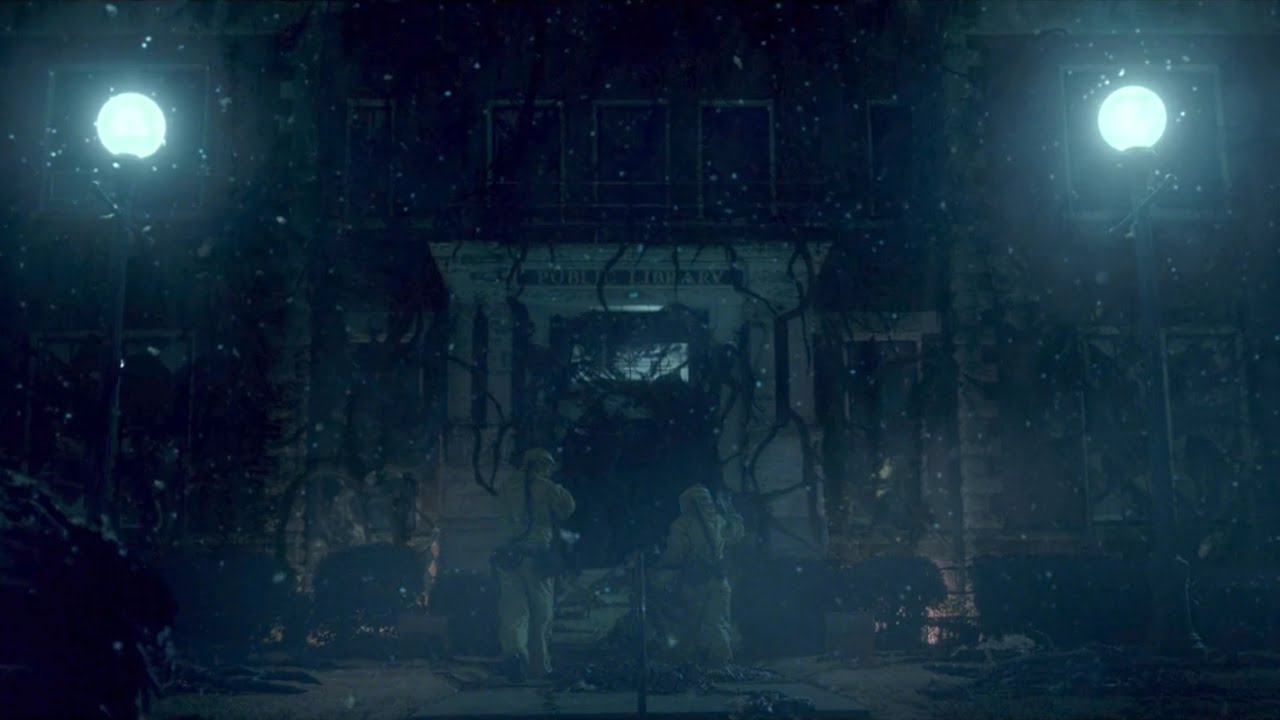On the eve of Stranger Things season three, we look at the series’ most important influence.
It can’t have escaped your notice that we’ve been going through a 1980s revival for the past few years. The music. The fashion. The colour and design. The looming spectre of Russian interference on the global socio-political stage. It soon comes flooding back.
The spearhead of the ’80s revival has been television and film, and the tip of that spear? That’s Netflix’s Stranger Things.
On the face of it, Stranger Things looks like it was designed by committee to capture the essence of the 1980s. It feels like a mood board, a composite, an e-fit sketch of something we all remember barely well enough to notice the differences. To use an era-appropriate example, it’s Weird Science, but instead of trying to cook up a girlfriend? The Duffer brothers have mixed up a cauldron of The Goonies, Gremlins, E.T, and Stand by Me – with a healthy splash of Dungeons & Dragons – to Frankenstein together a televisual supercut of nerdy nostalgia.
And it is nothing short of glorious.
In its second season, the influences change with the protagonists. D&D makes way for video games and the bright lights of the arcade, while the timbre of the story shifts from Chris Columbus to John Hughes. It’s still an ’80s adventure, but childish things have been put away, replaced by a coming-of-age teen drama.

Stranger Things doesn’t just wear its influences on its sleeve. It positively revels in them. It has posters of them in its bedroom. It has fabric patches of them sewn onto its rucksack. It went down to Kinko’s to print out t-shirts and hundreds of copies of its zine about them.
But there is one influence on Stranger Things that isn’t treated with the same reverence. It doesn’t fit with the mythology, the aesthetic, the kitsch. Hell, it’s not even from the right decade. But it is important, perhaps even more so than all others. It’s the one thematic river that runs at the centre of Stranger Things, as others chop and change with the passage of time and fashion.
That influence is 1999 video game horror masterpiece, Silent Hill.
Silence on Silent Hill
To our knowledge, the Duffer brothers have only name-checked Silent Hill once in an interview, and briefly, when discussing Stranger Things. That doesn’t mean we all haven’t noticed, though.
“Silent Hill is the one most people have picked up on,” Ross Duffer told IGN in 2016, “because that’s the least subtle one with the look of the Upside Down and with all the fog and the forest dripping. Obviously, we were really looking at that game for visualising this other world, so that’s a big one.”
At least the Duffers recognise how obvious the influence is on Stranger Things when asked by a video game specialist site. They also alluded to some other video game influences in the same interview, including the storytelling of The Last of Us (presumably for the Sherriff Hopper/Eleven relationship in season two) and the sound design of Dark Souls.
Why are Silent Hill and Stranger Things so infrequently mentioned in the same breath?

Perhaps it’s the relative reach of the game as a frame of reference. The original Silent Hill is thought to have sold around 1.6 million copies. Compare that to the number of people who have watched The Goonies or E.T. or Stand By Me, and culturally speaking, it’s a drop in the ocean. (Perhaps if the Silent Hill movie had been better, we might be having a different conversation.)
It could be the cachet of video games as culture or art. Video games are going through the same struggle that television did, when HBO railed against low production values to compete with cinema. Or before it, when talkies were dismissed as a fad against the tradition of silent films. (Until that perception is resolved, citing Spielberg as an influence is always going to carry more weight than a Hideo Kojima or a Ken Levine, for instance.)
Maybe it’s the tone. If you’ve not visited in a while, it’s easy to forget just how dark Silent Hill truly is. Stranger Things might be a horror, but that’s still couched in its setting, inextricably pinned to the age of its young protagonists. (And here’s hoping, in its third season, it can stop doing unpleasant things to Will to keep the story moving forward. The poor kid needs a break!)
Or perhaps – and this one feels closest to the mark – Silent Hill doesn’t come up as an influence on Stranger Things, simply because it doesn’t fit with the ’80s nostalgia marketing narrative.
But they are linked, and the two have far more in common than just a visual style, however.
The Upside Down
In Hawkins, Indiana, an impending incursion to – or the far more concerning, from – the Upside Down is heralded by flickering lights. In Silent Hill, it’s the ominous howl of an air-raid siren that foretells a visit to the Otherworld.
Aesthetically, both are cut from the same cloth. A viscose layer of fog clings to the negative space, a thick smear of vaseline on the lens, obscuring the world, creating dark places for menace to hide. In Silent Hill’s case, this was borne from the functional – draw distances on the original PlayStation were painfully low by today’s standards – but forced back through the feedback loop of video games apeing cinema, the foggy-comma-dark trope now feels like something gaming owns, that cinema and television now borrow from.
But it is the functional, more than the aesthetic, that truly ties together the kinship between the Upside Down and the Otherworld.

Both exist as a mirror, a disturbing facsimile of our world, a fantasy posed for our unease, decked out in the most unsettling of Instagram filters. Locations that exist in our world are echoed in theirs. We see the same themes and places, locations where we should feel safe – schools, hospitals, even our homes – replicated on the other side of that veil of festering and fog. In Stranger Things, the Upside Down version of Hawkins is overgrown with roots and tendrils, depicting how far the taint of the underworld has spread into our reality. In Silent Hill’s Otherworld, it’s the grotesque and the macabre, with rust and gore plastered across every surface. The Upside Down is clouded with floating ash and primordial ooze. The Otherworld is slicked with snow and rain and blood.
There are monsters, of course. There are always monsters, both in the reality we know, and in the netherworld mirror. But the Demogorgon and the demon dogs, the Mindflayer and Pyramid Head, they are not the source of our fear. These minions exist simply to amplify it.
But what Silent Hill has always done brilliantly, which other video game horror franchises with both feet planted firmly in the literal have failed to grasp, is to play on our unease at the perversion of the familiar, the innocuous, the mundane. The Otherworld is far more terrifying than any of the monsters within because it feels so close to home, and the same is true of the Upside Down. It feels like you could just pick at the corner of reality, like removing a label or turning a page, and find something so exquisitely unsettling, just on the other side.
It may not make it into the marketing narrative, but Silent Hill is the insidious Otherworld, the Upside Down at the heart of everything Stranger Things does, flickering at the fringes of our perception.
This is the true legacy of the horror opus, now dormant and unloved by publisher Konami, and it is replicating this one specific influence for television that drives the success of Stranger Things, far more than any 1980s pop culture references ever could.
An earlier version of this story incorrectly credited Hideo Kojima with the creation of Silent Hill, when Kojima in fact created Silent Hills. The article has been updated to correct this error.






